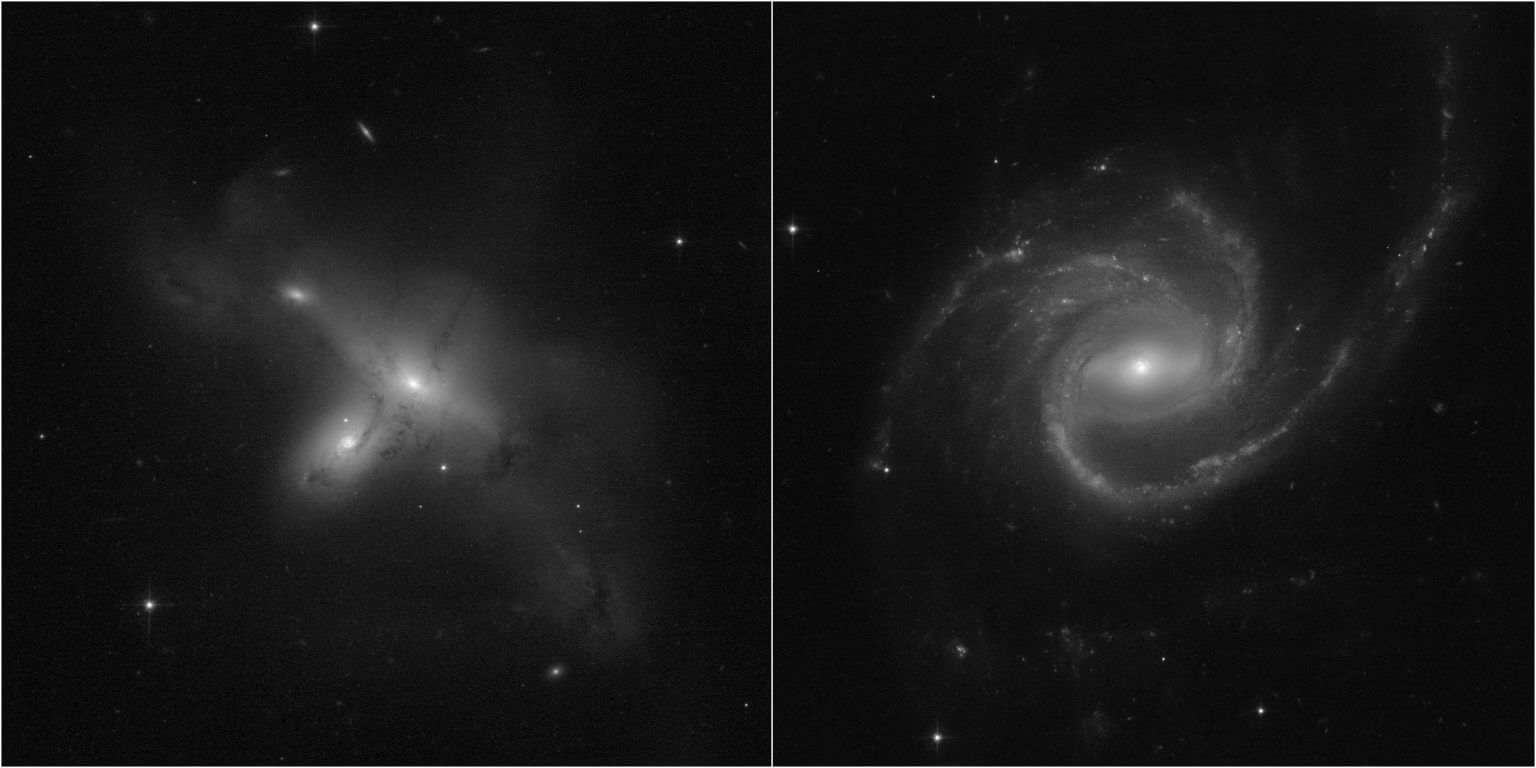These two unique galaxies are part of a program to survey strange galaxies scattered across the sky

Among other things, ARP-MADORE2115-273 was photographed, a rare observation of an interaction between a pair of galaxies and ARP-MADORE0002-503 – a large spiral galaxy with unusually extended spiral arms.
These images, from a program led by Julian Delcanton of the University of Washington in Seattle, show Hubble's return to full scientific activity. Left: ARP-MADORE2115-273 is a rare observation of an interaction between a pair of galaxies in the Southern Hemisphere. On the right – ARP-MADORE0002-503 is a large spiral galaxy with unusual outstretched spiral arms. Most disc galaxies have an even number of arms, but this galaxy has three.
These two unique galaxies are part of a program to survey strange galaxies scattered across the sky.
These early images show Hubble's return to full scientific activity, after a computer glitch on the spacecraft was fixed. Normal science observations resumed on July 17 at 13:18 PM EST. Among the first targets: globular star clusters in other galaxies and auroras on the giant planet Jupiter, in addition to looking at strange galaxies.
These two unique galaxies are part of a program led by Julian Delcanton of the University of Washington in Seattle to survey strange galaxies scattered across the sky.
[Left part] — ARP-MADORE2115-273 is a rare example of an interaction between a pair of galaxies in the Southern Hemisphere. These Hubble observations are Hubble's first high-resolution look at this intriguing system, located 297 million light-years away. Astronomers first thought it was a "collision ring" system because of the frontal merger of two galaxies. Hubble's new observations show that the ongoing interaction between galaxies is much more complex, leaving behind a rich network of stars and nebulous gas.
[Right part] — ARP-MADORE0002-503 is a large spiral galaxy with unusually wide spiral arms, 490 million light-years away. Its arms extend to a radius of 163,000 light-years, and is therefore three times more extensive than our Milky Way galaxy. Most disc galaxies have an even number of arms, but this galaxy has three.
"I admit that I had some moments of tension during the Hubble shutdown, but I also believed in the wonderful engineers and technicians of NASA. Everyone is very grateful, and we are excited to get back to science!” Delcanton said.
More of the topic in Hayadan:

3 תגובות
In the ultra-Orthodox press and media, the entire issue of space is completely ignored. The contradiction to the stories of the Torah in Genesis God created the heavens and the earth, the heavens about 6 7 km of air and then space. The space does not appear..and after the creation of the sun and the moon on the 4th day, and even though there were none, the days were counted. And the sun revolves around the earth which is the base of the center of the universe. Until then the land was flat and stationary.
And the size of the universe beyond the approximately 5700 years of creation... because of the many contradictions and fairy tales, the ultra-Orthodox leadership prefers to prevent knowledge from learning, stories, articles, photographs... which specify all scientific specializations.
How long will a public of over a million and another period of 2 million live in a world of legends and lies where there is a sky where the rain is found, the throne of God, the angels, the nocturnal devil... and the rest of the stories of the Jewish legend.
Very interesting, thank you
Hubble marks the most important turning point in astronomical observations in the last hundred years. There is the "primitive age" that preceded the space telescope and there is the "modern age", when Hubble provides the most significant discoveries. It is interesting to note that the space telescope was manufactured by a contractor of spy satellites for the Pentagon - and even the embarrassing malfunction that hit it in its early days is due to the fact that the lens focus calibration was carried out using the method of a spy camera designed to penetrate the atmosphere, and not to probe the absolute void of the cosmos.